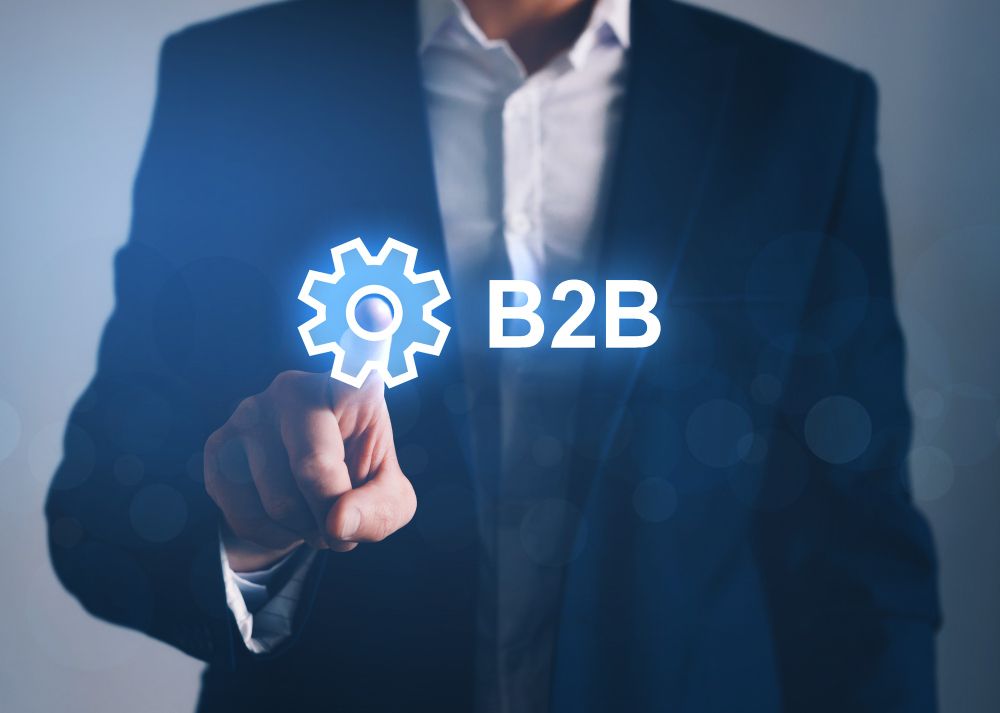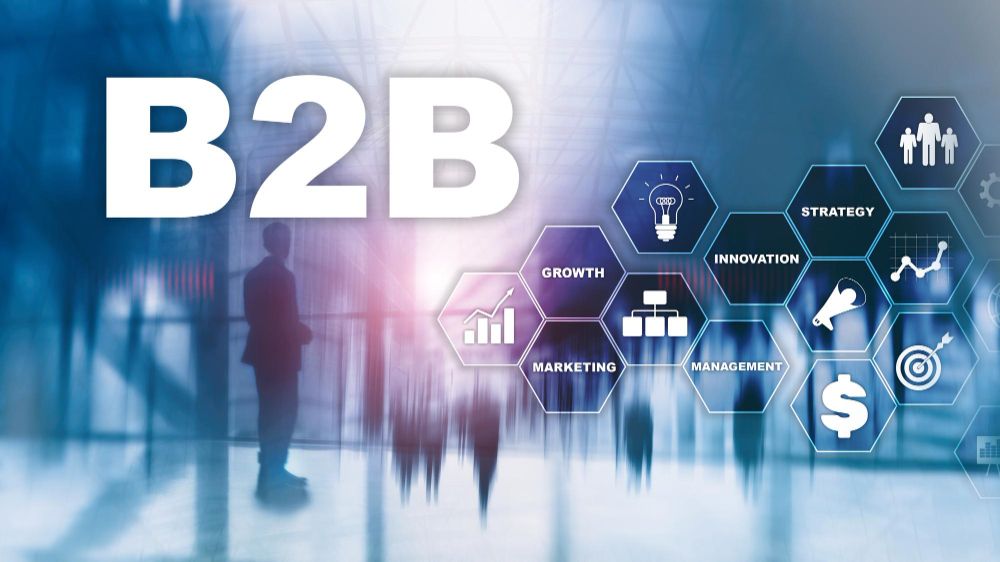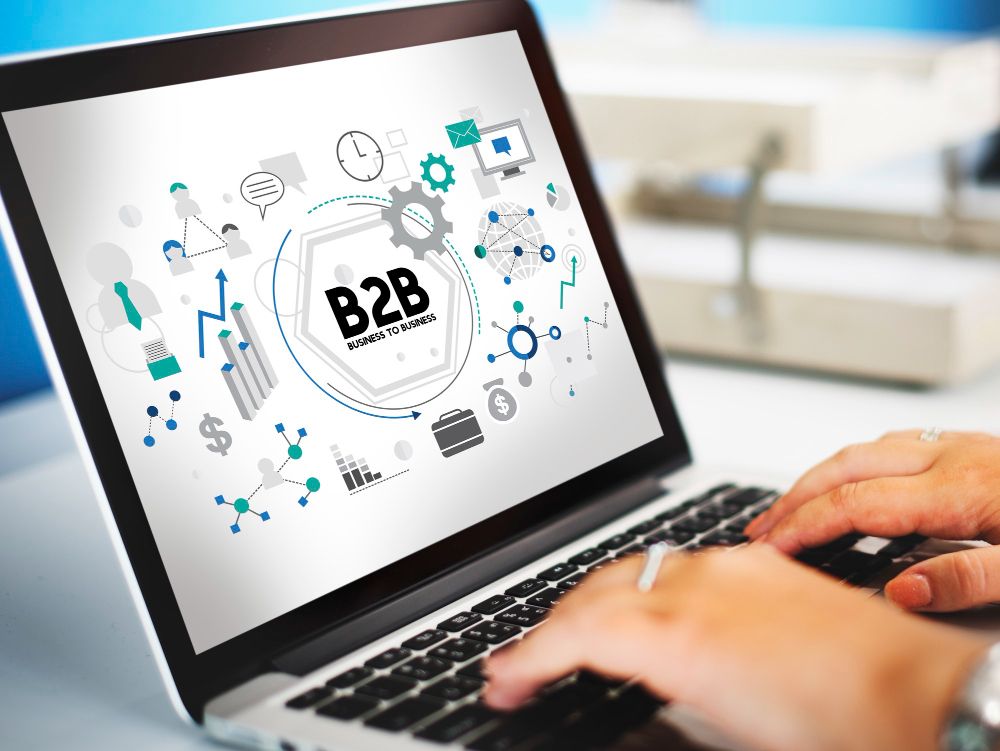To those who have always been B2C buyers and sellers, the idea of a business “buying” from another business can seem like an oxymoron. After all, isn’t it only people who buy things? And how does a “business” even have money to spend?
So, what is b2b eCommerce? Well, behind every consumer-oriented product is a complex network of B2B transactions that occur to make it available for purchase by consumers.
For example, the shirt you just bought was manufactured by one company using fabrics supplied by another. The button on the shirt came from yet another company, and so on.
What’s more, these companies aren’t buying these products for their use; they’re buying them to resell at a profit. As you can see, the world of B2B commerce is much bigger than most people realize.
What Is B2B eCommerce?
B2B eCommerce is the buying and selling of products and services between companies, which can be done online or offline. It’s also known as Business-to-Business commerce or B2B. There are additional business models like B2B eCommerce for distributors, manufacturers, wholesalers, etc.
B2C eCommerce is the buying and selling of products and services between consumers (customers) and businesses (merchants). In the digital sales room, merchants create a virtual environment where consumers can explore, learn about products, and interact with sales representatives, fostering a more personalized and engaging online shopping experience.
When Did B2B Commerce Start?
B2B eCommerce has been around since the 1990s, but it’s not a new trend. In fact, B2B eCommerce is growing in popularity and continues to improve how companies do business with each other.
Companies that sell products or services can benefit from B2B eCommerce in many ways: they can increase revenue and improve customer satisfaction while improving their customer experience overall.
How Does B2B eCommerce Work?
It’s also important to note that B2B eCommerce is not just about selling things online. It’s a process, a channel, and even a business model.
In addition, B2B eCommerce is the buying and selling of goods or services between two companies—and it can happen either through your company’s website or other sites like Amazon or eBay. This differs from traditional retail channels, where consumers are the end-users who are transacting directly with the brand.
B2B eCommerce is an extension of your existing business strategy and customer experience; it’s not just a website you build to sell items online.

What Are the Benefits of B2B Ecommerce for Buyers?
Buyers:
- Ease of use. Because buyers are already familiar with the eCommerce experience, they don’t have to learn a new way of shopping. They can search for products, compare options and prices, and make purchases online as they would in any other kind of store.
- Faster transactions. With B2B eCommerce, you can save time by not having to drive across town or even across the country to find what you need—you can buy it online at your desk! Plus, there’s no need for cashiers or checkouts because payments are made through secure payment gateways that require only basic personal information like name, address, and credit card info (and even that isn’t necessary if you pay with PayPal).
- Lower costs. Shipping costs nothing when buying from an online store—the retailer takes care of all shipping costs, so buyers don’t have to worry about whether their items will arrive safely or how much it’ll cost them when they arrive safely (because most retailers offer free shipping). Additionally, many B2B eCommerce sites provide discounts for bulk purchases which means suppliers may be able to drop their prices economically too because they sell more units per shipment than before.

How Do You Drive Growth in B2B eCommerce?
To grow your business this way, you’ll need to follow the same steps that all companies use. That means using technology to make your business more efficient, using data to make better decisions, and using automation (including AI) to free up time and resources for other initiatives.
You can also use the latest marketing techniques like social media or email marketing that help you reach new customers and build relationships with existing ones. To maximize growth in B2B eCommerce, it’s crucial that your company makes it easy for customers to buy from you instantly—and offers convenient payment options.
You should also track customer behavior with analytics software so that when an opportunity presents itself for a new product or service offering, you can be ready with relevant information about what works best for each audience segment across different platforms.
Can Buyers Customize Products Through B2B eCommerce?
Buyers can customize products through B2B eCommerce.
Examples of how buyers can customize products:
- Buyers can fill out a form with their customizations, which will be sent to the manufacturer/supplier. The manufacturer/supplier will create a new product based on those specifications and send it back to the buyer.
- Buyers can log into their account on the seller’s website and add or remove features from an existing product using the seller’s interface.

How to make customization simple and easy for buyers:
- Keep your forms short and to the point by asking only what needs to be asked—don’t ask questions that don’t matter or that could be answered by another piece of information already provided by the customer. For example, don’t ask, “What color do you want?” when there is already an option for colors.
- Don’t require too many steps for customers to complete their customization (ease them into it). For example, if someone wants to change something about their purchase after they’ve placed it, give them an easy way back into your portal/website. In this case, they don’t have to navigate through multiple pages again just because a tiny thing changed between when they left off last time vs. today’s visit when trying again later today after purchasing something else.
How Can Businesses Ensure Security in an Online B2B Environment?
You can ensure the security of your B2B eCommerce site by using strong passwords, two-factor authentication, and a password manager. Strong passwords are essential to keeping your company’s data safe.
But what makes a strong password? It must be long and complex enough that it would take an average person many years to crack it.
Two-factor authentication will also help keep hackers out of your system, which is vital in any situation, especially when dealing with sensitive information like credit card numbers or Social Security numbers. A password manager will allow employees to use unique passwords without remembering them all themselves.
What Are Some Trends in B2B eCommerce?
The trends in B2B eCommerce are all about making the customer experience better. Customers want to buy from companies they trust, providing them with a seamless experience across multiple channels. Customers want to be able to buy what they want, when, where, and how they like it.
They expect a personalized user experience, even with big-ticket items like big-screen TVs or commercial construction equipment, which can cost thousands of dollars.
They also expect an easy exchange process if something goes wrong or does not meet expectations—and good luck getting anything done over the phone. This is why B2B eCommerce needs to change fast: It must adapt its practices for this new era to survive.
VR (virtual reality experiences) and AR (augmented reality) are also essential trends in B2B eCommerce because they help brands show off their wares without having any product on hand.
Stages of B2B Business
- Startup. A new business is just that, a startup. They’re growing their customer base one at a time and haven’t established a reputation yet. This can be difficult to do in this age of reviews and recommendations. Still, it can also be an opportunity for you if you’re willing to work hard at establishing yourself as someone trustworthy and competent.
- Growing. Once your brand has established itself in the market, it’s time to grow your customer base beyond those who came from word-of-mouth referrals or inorganic marketing (like social media). This stage is often characterized by rapid growth in revenue due to increased sales volume and expanding margins through economies of scale (which means more money per sale).
- Scaling. Now that your company has grown significantly over its first few years, it might be time to expand geographically or into another product category within your existing industry verticals (think Uber is expanding into food deliveries with UberEATS). The goal here is not necessarily increasing revenue directly but expanding reach so that more people are aware of what services/products exist within each category being offered by competitors across different geographic regions where they currently operate.
- Maturity. A B2B business is mature when it has reached the point where it can do everything it needs to do, and all of its employees are working at peak efficiency. For instance: A mature B2B business might be able to automate many of its processes, which means that fewer people are needed to run them. This also means that the people who are still needed have more time to focus on their most important responsibilities (and not just keeping up with the basics). The result? A company that’s able to deliver a better product or service in less time with fewer resources.
The Key to a Successful B2B Business Is To Make the Shopping Experience Simple, Easy, and Efficient

The key to a successful B2B business is to make the shopping experience simple, easy, and efficient. This means you need to make it as easy as possible for your customers to find what they are looking for.
You also want them to be able to order products with just a few clicks of the mouse or taps on their mobile device screens. Once an order has been placed, it needs to be tracked so that you can keep each customer informed about their purchase’s status from inception until final delivery or return.
Finally, there needs to be an easy way for your customers who wish not only to order but also to return items; this will help prevent any problems down the road by ensuring that everyone is satisfied with everything from start to finish (and beyond).
Final Thought
Of course, there are pros and cons to any business model. But if you’re looking for an effective way to engage with a niche market, the B2B eCommerce platform is a great place to start.

